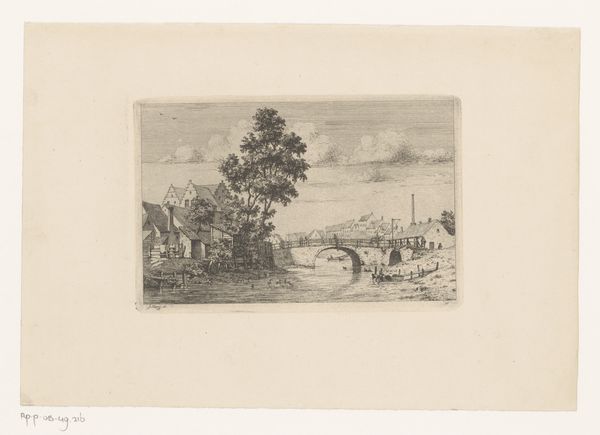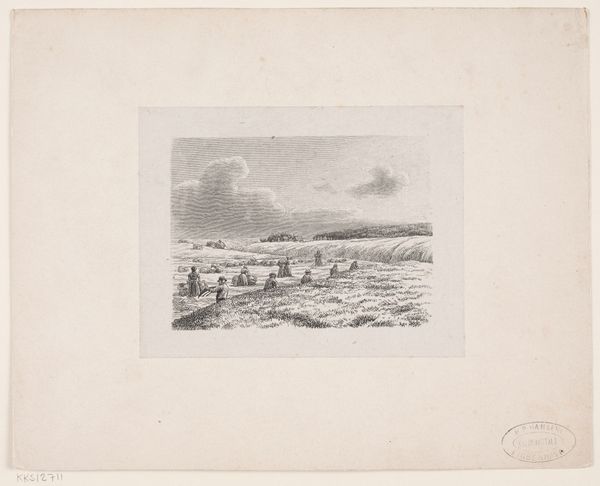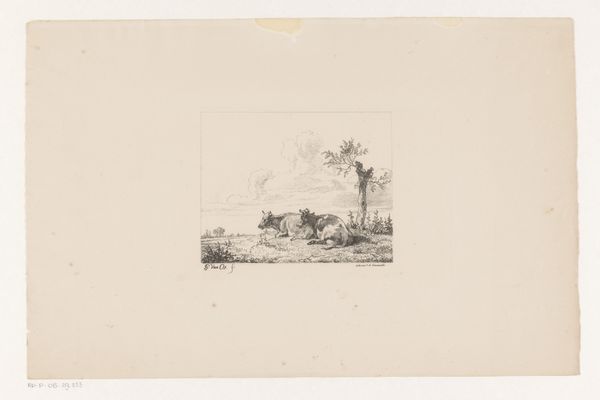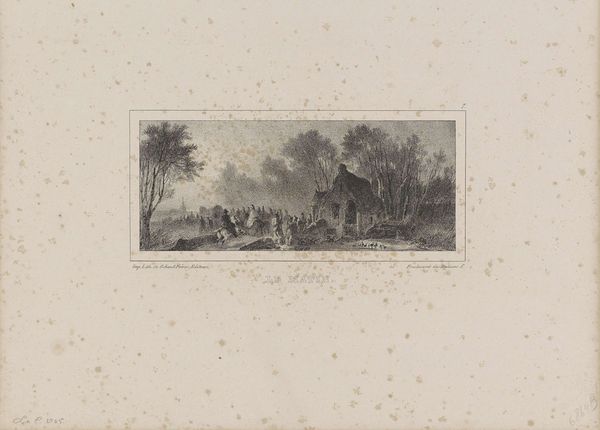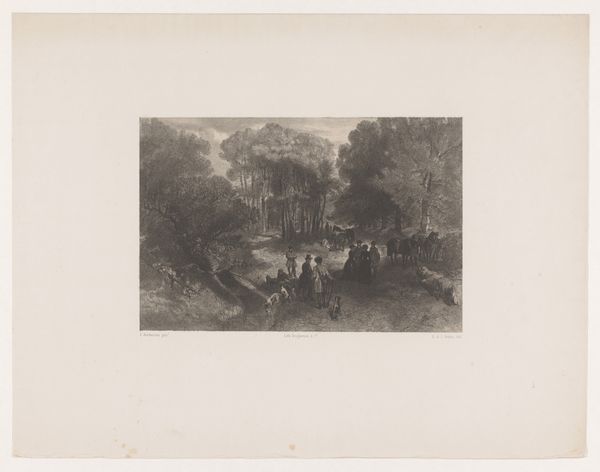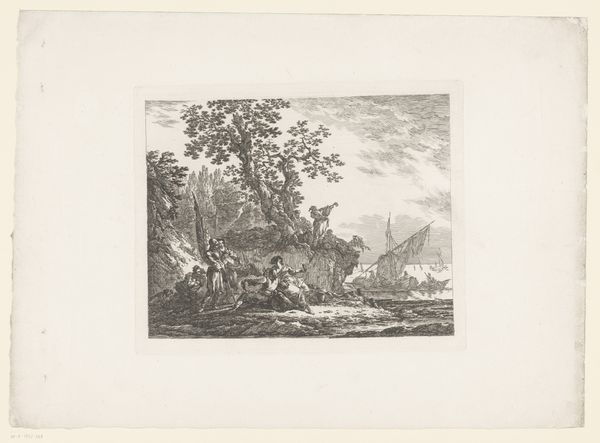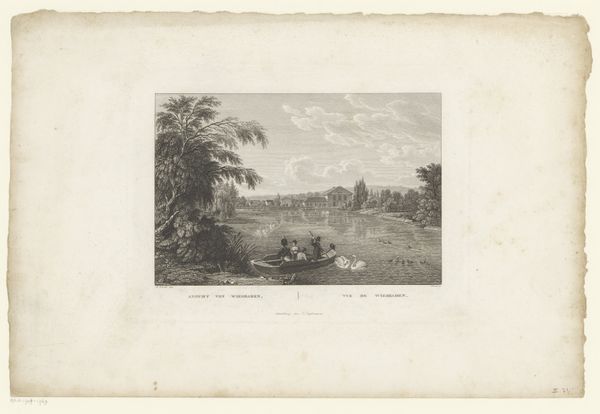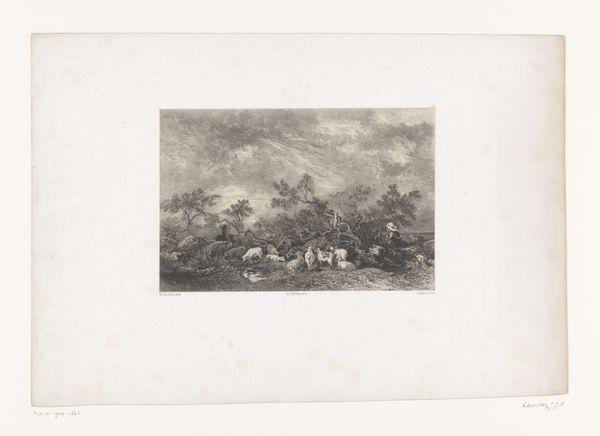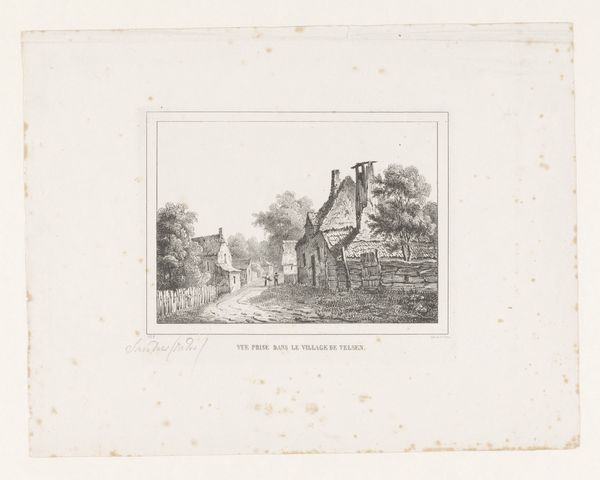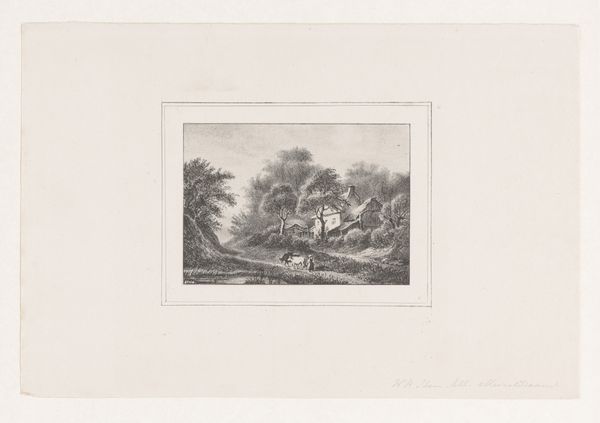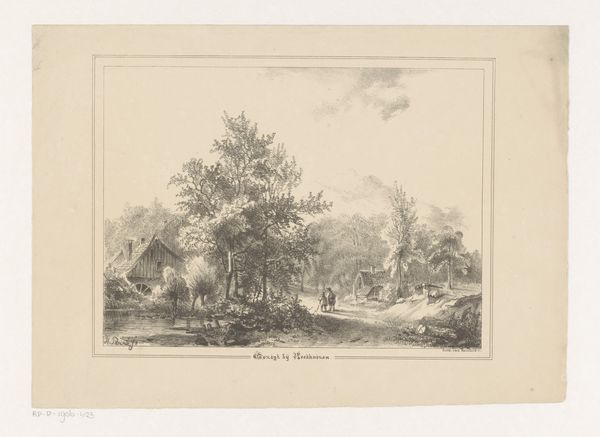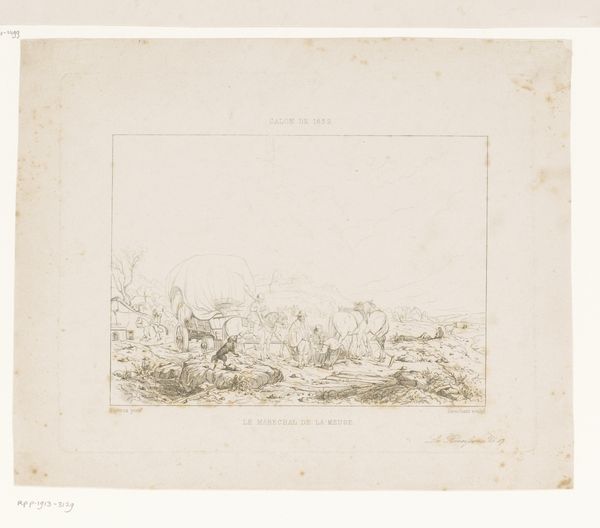
print, engraving
#
16_19th-century
# print
#
landscape
#
orientalism
#
cityscape
#
engraving
Dimensions: height 183 mm, width 259 mm
Copyright: Rijks Museum: Open Domain
Curator: This engraving presents "Gezicht op Batavia met figuren op de voorgrond", or "View of Batavia with Figures in the Foreground," created sometime between 1828 and 1874 by W. Wallis. Editor: My first impression is one of tranquility. Despite the city in the distance, there's a real stillness in the foreground figures, almost idyllic. Curator: It's crucial to examine this scene through the lens of Dutch colonialism. Batavia, now Jakarta, was a vital hub in the Dutch East Indies. The "view" itself is constructed through a colonial gaze. Who is being represented, and how? Who is centered, and what stories are suppressed? Editor: Precisely. We have figures—presumably locals—placed as ornamental features within the landscape. Notice the posture and dress of the person on horseback; a figure of authority. This isn't just a benign cityscape, but a carefully constructed display of power and control. Curator: The artistry also lies in what isn't overtly shown. What does it mean to represent a colonised city without depicting the inherent tensions, the violence, the inequalities that characterised colonial rule? Where are the voices of resistance? Editor: It seems to evoke what postcolonial scholars refer to as "othering". The depiction lacks an authentic voice, favouring a projection by the European perspective that reduces this region into a simple aesthetic of exotic allure. Curator: It reflects a broader art historical pattern – orientalism – that frames non-Western societies through romanticized, often inaccurate lenses. This "Batavia" isn’t a real place, but rather a reflection of European fantasies and imperial desires. Editor: I also think about the role of art in perpetuating these power dynamics. By circulating images like these back in Europe, Wallis contributed to solidifying a particular narrative of Dutch superiority and the "naturalness" of their colonial project. Curator: So, instead of just viewing it as a pleasant landscape, we need to ask who created this image, for what purpose, and whose perspectives are marginalized in the process. Editor: I agree. By acknowledging the context and subtext, we are challenged to delve deeper into issues of representation, cultural domination, and the legacy of colonial image-making.
Comments
No comments
Be the first to comment and join the conversation on the ultimate creative platform.
